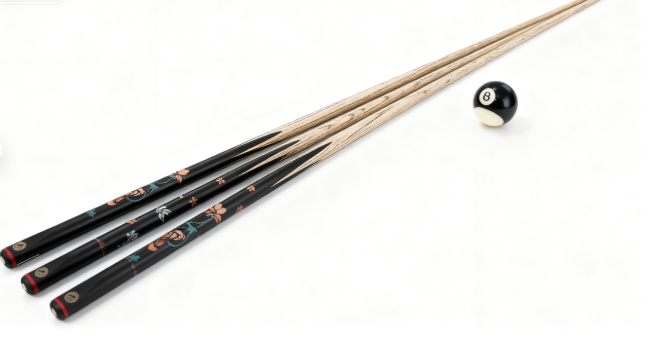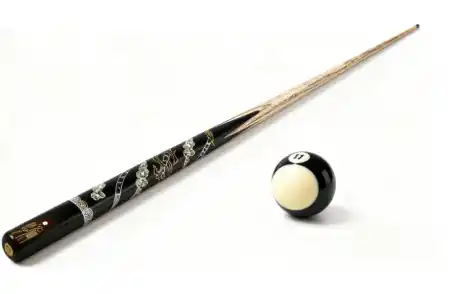To play billiards properly, the first skill you need to master is how to grip the cue. Whether you are right- or left-handed, grip placement is critical. A correct grip allows for smooth, controlled strokes and is the foundation of good play.
Start by forming a circle or hook with your thumb and index finger, then slide the cue stick through this circle. Adjust it left and right until it feels balanced. This balance point is the cue’s center of gravity. From there, move your hand about 20–30 centimeters toward the butt of the cue—that’s the standard grip position. For more advanced or specialized shots, you can shift your grip slightly forward or backward.
Avoid gripping the cue too tightly. A tense hand or wrist will stiffen your arm, making it harder to strike the ball smoothly. Instead, hold the cue gently between your thumb and index finger at the base of your palm, almost like wearing a loose ring. The thumb and first two fingers control the cue lightly, while the little finger rests around the cue for stability. This balance keeps your stroke straight and controlled.
Your stance is equally important. Many beginners stand casually in front of the table and swing without much thought, which leads to poor accuracy. A proper shooting posture—steady, balanced, and aligned—makes a huge difference in how well you can aim and strike.

Learning the Rules
Alongside technique, understanding the rules of billiards is essential.
The Break and Ball Placement
The break begins in the “teeing area,” a semicircle with a diameter equal to one-sixth of the table’s width, located at the midpoint of the line parallel to the bottom rail. The “spot” where the balls are racked is the intersection point formed by the diagonals between the top pockets and side pockets on the opposite end of the table.
There are sixteen balls in total: one white cue ball, seven solid balls (1–7), seven striped balls (9–15), and the black 8-ball. The 15 colored balls are racked in a triangle, with the 8-ball placed in the center of the third row. Solids and stripes should be positioned alternately to keep them evenly distributed.
Breaking Rights
Who breaks first can be decided by a coin toss, a lag (a distance comparison shot), or simply by agreement. Afterward, the winner of each game takes the next break.
Scoring Rules
Once a player pockets a ball, they continue shooting until they miss, foul, or win the game. After the break, the group of balls (solids or stripes) is determined by the first legally pocketed ball. Players don’t need to sink their balls in numerical order; what matters is targeting the correct group. The black 8-ball must always be pocketed last—and into a declared pocket. Pocketing it early, or failing to call the pocket, results in a loss.
The game continues until one player legally pockets the 8-ball, winning the round.


